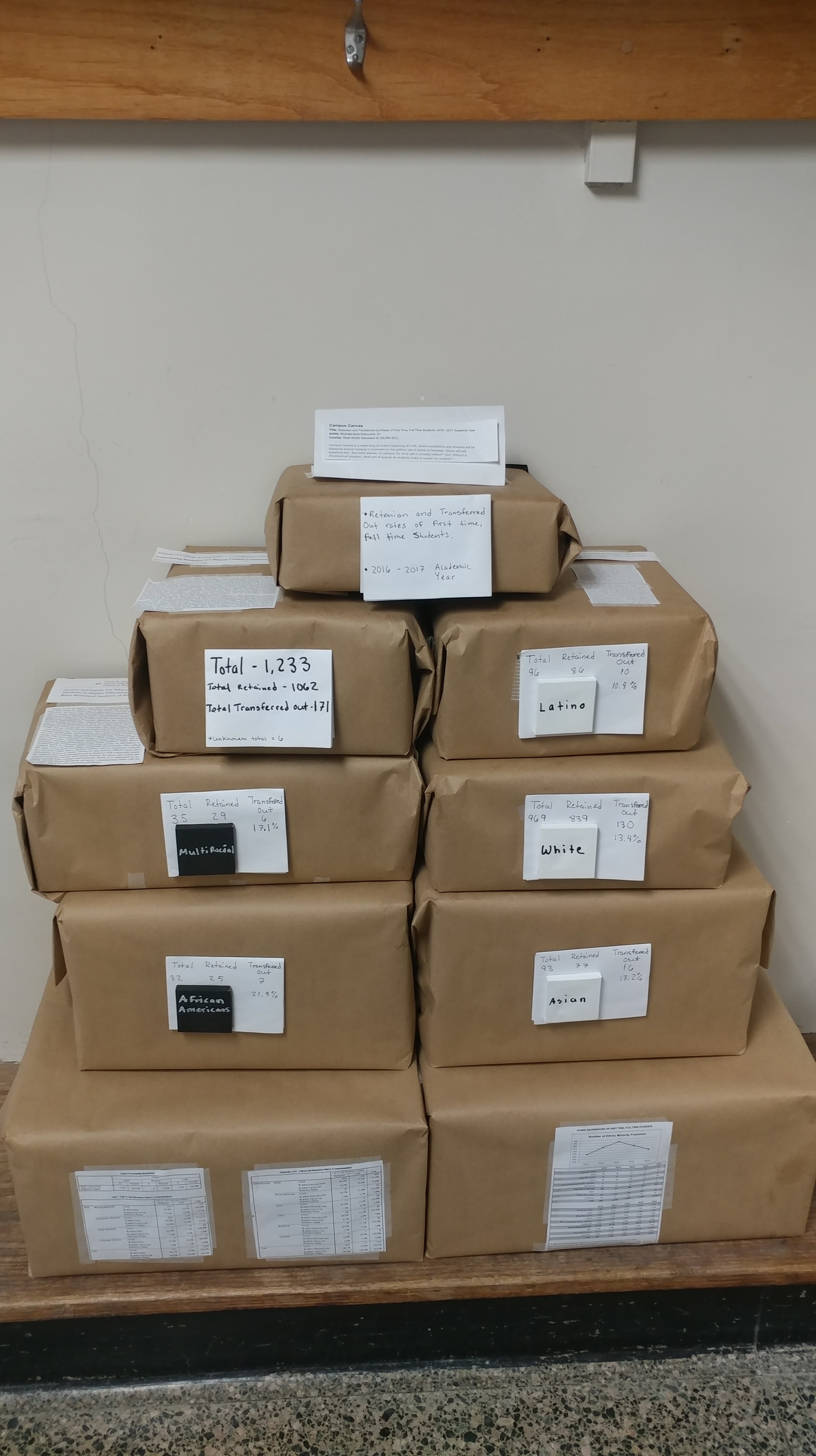A few months ago, our class had the pleasure of visiting Dr. Cynthia Hawkins-Owen in the Bertha V.B. Lederer Gallery where she was able to give us a more comprehensive description and deeper understanding of everything that goes into running a gallery. I would venture that quite a few of us, including myself, were surprised at how much Dr. Hawkins-Owen does on a daily basis to bring together new and exciting exhibits!
In addition to teaching college classes, I believe Dr. Hawkins-Owen said that her job entails five primary responsibilities (each with a vast subset of other tasks), just a few of which are administration, curation, and maintaining the permanent collection. Getting out announcements, making and distributing posters, maintaining public relations, and keeping up with the online representations of the gallery and everything to do with it are all part of her administrative duties. In terms of curating, Dr. Hawkins-Owen must look for unique art and artists whose work she would like to display, she must communicate with the artists to gauge which of their pieces they actually want to show, attend meetings with the artists, their representatives, and others, help move art to and from the Gallery, go through each piece and record any damage or lack thereof, install each piece and take them down at the end of the exhibit, etc. The list goes on! I was simply shocked listening to Dr. Hawkins-Owen speak of the work she does, because so little of it is visible to us, the viewers, when we attend a gallery opening or go to admire these works. Continue reading “The Permanent Collection”


